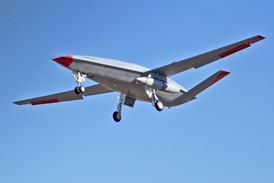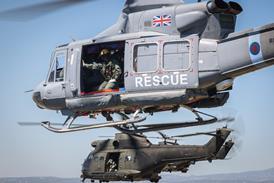The business and general aviation market remained flat in 2015, with the revival of the midsize business jet sector - driven by the introduction of new designs - one of the few bright spots during the last 12 months.
In its latest annual industry review, released on 10 February, the General Aviation Manufacturers Association (GAMA) records total deliveries of 2,267 fixed-wing aircraft in 2015, compared with 2,376 pistons, turboprops and business jets a year earlier. The value of these shipments totaled $20.9 billion - $87 million lower than in 2014.
The business jet sector was the top performer during the period and the only niche to record a year-on-year increase in shipments, GAMA says. The data shows 644 deliveries in 2014 compared with 654 last year.
GAMA’s report excludes Bombardier’s fourth quarter shipments for the last two years to give a like-for-like comparison.
The Canadian airframer will release its 2015 delivery figures with its full-year financial results on 18 February.
However, Flightglobal’s Fleets Analyzer database records 78 Global, Challenger and Learjet deliveries between September and December.
This tally brings Bombardier’s 2015 shipments to 200 - three fewer than in 2014 - and the overall business jet sector shipments for 2015 to 732 aircraft – ten more than in the previous 12 months.
“The business jet sector is solid and mature,” says GAMA president and chief executive Peter Bunce. “Most of the demand is coming from the US market where the strong economy is triggering a return of corporate buyers and high-net-worth individuals.”
Bunce's view is supported by Daniel Hall, senior analyst with Flightglobal's Ascend consultancy. "North America saw a 13% new delivery increase from 374 to 421 units, making 2015 the first year since 2008 that specifically the USA bettered the rest of the world," he says
Growth in the business jet sector in 2015 was also precipitated by the introduction of a wave of new products on to the market “which are helping to re-energise the sector, stimulate customer demand and bolster the fortunes of their developers” Bunce adds.
MIDSIZE STIMULI
His view is supported GAMA’s data.
The introduction of the Citation Latitude in August lifted Cessna’s annual delivery tally by nearly 5% in 2015 to 166 units. Sixteen of the midsize jets were shipped last year.
Likewise. Embraer’s shipments rose from 116 in 2014 to 120 last year, solely on the back of the midsize Legacy 500 and its mid-light stablemate, the Legacy 450. In contrast, deliveries of the Phenom 100/300, Lineage 1000E and Legacy 600/650 fell to 105 units in 2015 from 113 a year before. The Legacy 600/650 saw the sharpest decline, with only three aircraft shipped in 2015 compared with 18 in 2014.
The top-half of the business-jet sector performed sluggishly last year due to the continued slump in demand for large, long-distance aircraft from international markets such as Brazil and China. According to Hall, deliveries to these countries fell by 70% in 2015 to 13 and 8 units respectively. "It is fair to say the manufacturers at the top end of the market have been feeling the pain," says Hall
GAMA reports 317 shipments of large-cabin, long-range and VIP airliner-sized business jets in 2014 compared with 290 during the last 12 months. Dassault saw the biggest decline during this period, delivering 11 fewer Falcons – a 50% fall year on year.
Bombardier recorded a nine-unit fall in Challenger 605/650 shipments year on year to 25 aircraft – this is due in part to the late certification of the upgraded 650, which finally entered service in November. Deliveries of the high-end Global 5000/6000 also fell by seven units during the same period to 73 aircraft. Bombardier is readjusting the Global production rate to reflect falling sales.
Gulfstream continued to buck the trend with shipments of its top-end trio – the G450/550/650 - climbing by three aircraft to 120 aircraft in 2015. Boeing also recorded a one-aircraft hike in BBJ shipments, including two BBJ 787-9s and a BBJ3.
TURBOPROP DECLINE
The turboprop sector was the worst performing fixed-wing segment in 2015. Deliveries of single- and twin-engined models slid by nearly 8% to 557 aircraft, GAMA reveals. The decline is due almost entirely to continued weak demand for new agricultural aircraft. Air Tractor recorded a drop in shipments of its AT-family from 145 in 2014 to 114 last year. Similarly, Thrush Aircraft saw the tally of its S2R series fall from 36 to 29 units.
If the agricultural segment is excluded, however, the core-business turboprop market has remained stable, GAMA reveals. The top performer last year was Cessna’s Caravan. Deliveries of this single-engined utility type rose from 94 units in 2014 to 102 last year. Thanks to its expanding international dealership network, shipments of the Kodiak single-engined model climbed by 10% to 32 units. In fact, the strength of the single-engined turboprop market prompted Cessna’s parent Textron Aviation to launch in July a clean-sheet aircraft into this niche. The model will be unveiled later this year at the AirVenture show in Oshkosh, Wisconsin.
After a 12-month absence from the GAMA shipment records, due to the certification effort on its Avanti Evo, Piaggio re-emerged in 2015 recording three shipments of the twin-pusher. The Italian airframer is planning to ramp-up deliveries significantly in 2016 to clear its growing backlog.
Overall shipments of pressurised twin-turboprops fell last year however by 7%, GAMA records. Most of the weakness was focused on Beechcraft’s entry-level King Airs – the C90GTx and 250. Combined shipments fell by 23 units to 33 aircraft this year.
Aerospace analyst Rolland Vincent says the top-of-the-range 350i remains the star of the King Air family thanks to the 105-strong order from US membership-based operator Wheels Up. “The 350i remains unchallenged in a unique market space,” Vincent says. “With Textron’s new [single-engined turboprop] in the works, I would not be surprised if the weak delivery output is a signal of the slow demise of the lower end of its King Air line.”
PISTON DECLINE
The piston-powered sector fared little better in 2015 than turboprops. Deliveries of single- and twin-engined types fell by 6.5% during this period to 1,056 aircraft. This compares with 1,129 deliveries in 2014.
With the exception of Cessna, Mooney and Tecnam, which recorded 51-, nine- and one-unit rises, respectively, in 2015 shipments, all the airframers saw a decline in deliveries. Diamond Aircraft disclosed a 46% fall in deliveries of its four-seat DA40 during the period - from 136 to 75 units - while shipments of Beechcraft’s Baron and Bonanza fell from 72 to 41 aircraft.
Bunce attributes this decline to a slowdown in demand for private flying and the lack of large contracts for piston-engined aircraft from the global flight training market.
GAMA’s latest delivery numbers are line with industry expectations, Vincent says.
He predicts a modest increase in business jet shipments this year on the strength of several new programmes in production ramp-up - notably the Legacy 450/500, Latitude, Honda Aircraft HondaJet and Challenger 650.
“Shipments of high-end business jets are expected to fall again as Bombardier continues to readjust Global 5000/6000 production and Gulfstream lowers G550/G450 output,” says Vincent. “Likewise the Falcon 7X shipments as Dassault transitions to the 8X [in the third quarter],” he says.
This decline will be offset by the growing midsize sector “and the buoyancy effect of the HondaJet [light twin] at the lower end”, he says.
Source: Flight International
















